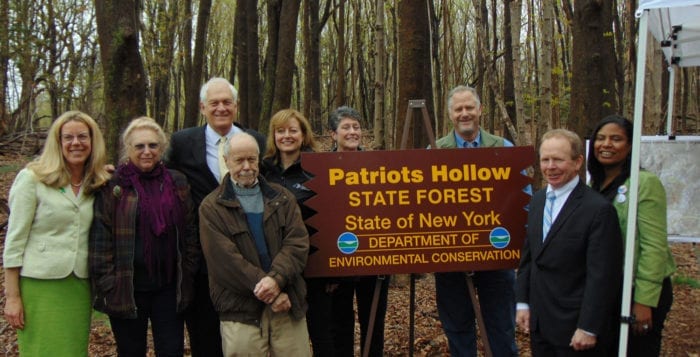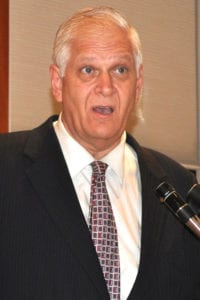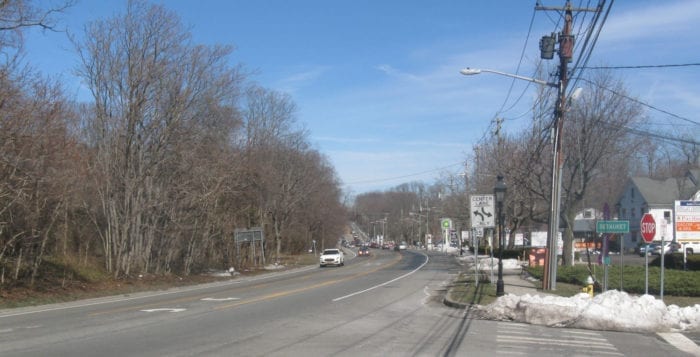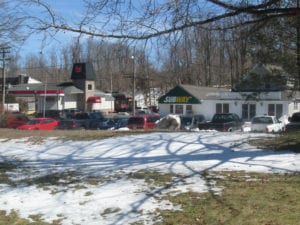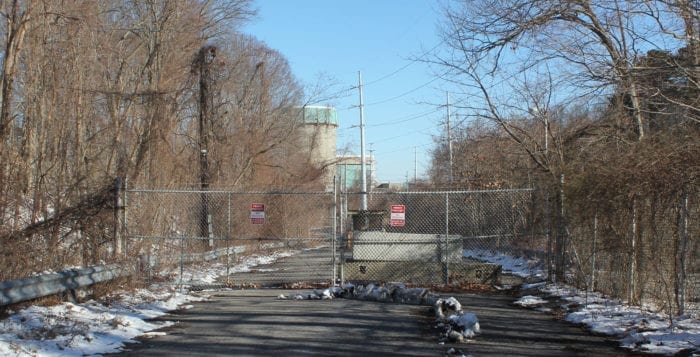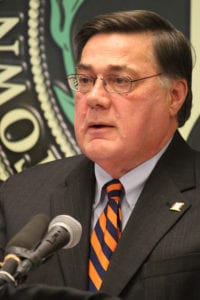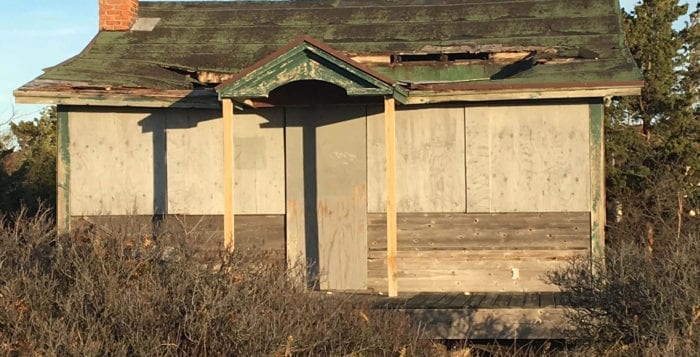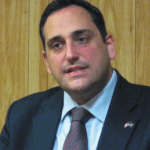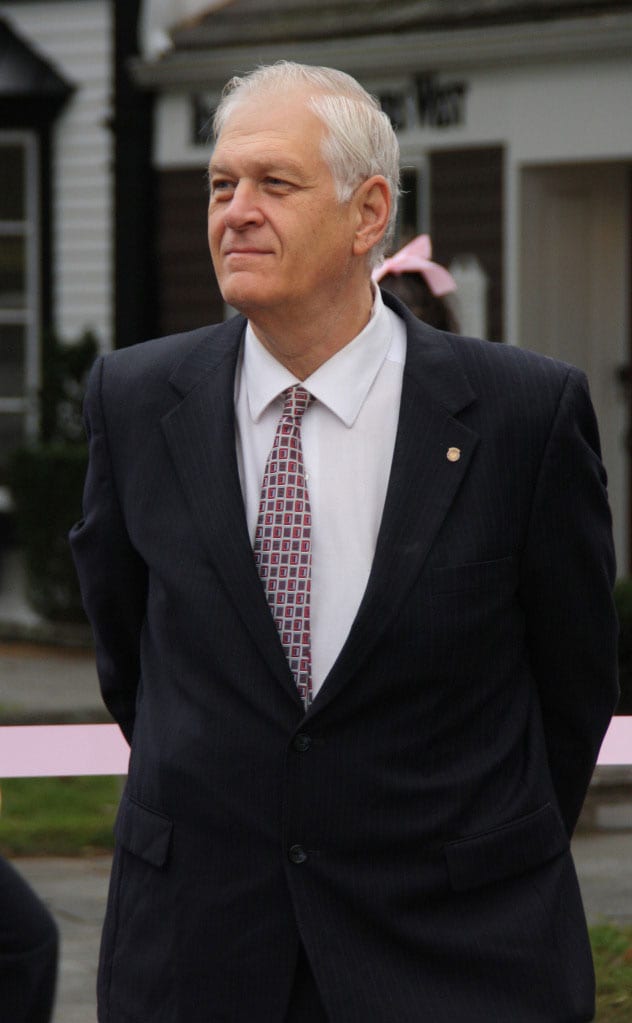By Rita J. Egan
George Washington and the Long Island Culper Spy Ring continue to make history on the North Shore.
A press conference was held May 18 on the lawn of the Brewster House in East Setauket after the installation of 26 signs along the Route 25A corridor from Port Jefferson To Great Neck, which now designate Route 25A as the Washington Spy Trail. One of the signs, unveiled at the end of the event, is located in front of the Brewster property.
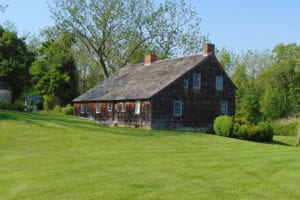
The installation of signage and the designation comes after almost two decades of work on the part of the North Shore Promotional Alliance. The state road was chosen because President George Washington once traveled it to thank the patriots for helping him win the Revolutionary War, and it was also a route that spy Austin Roe used to pick up and deliver secret messages to military officer and spy Benjamin Tallmadge in Connecticut.
Gloria Rocchio, President of The Ward Melville Heritage Organization and North Shore Promotional Alliance, said that during the days of the Culper Spy Ring in the 1700s the Brewster House was one of only a few homes, and at the time of the American Revolution, the area was occupied by 300 British troops.
“Our community was divided between Loyalist and Patriots who supported the revolution in secret,” she said. “This history is the very history of America. Our efforts over the past 17 years have been to shine a light on our American Revolution and to encourage people to visit those important sites on the North Shore where history was made — the George Washington Spy Trail, Route 25A.
In addition to thanking her fellow members of the NSPA and others for their work, Rochhio acknowledged State Sen. John Flanagan (R-East Northport) and State Assemblyman Steve Englebright (D-Setauket) for introducing a legislative resolution in both the New York State Senate and Assembly that recognizes the dedication of the trail as well as the service of the spy ring members. On the same day, U.S. Rep. Lee Zeldin (R-Shirley) and U.S. Rep. Tom Suozzi (D-Glen Cove) were presenting a similar resolution in congress.
Flanagan thanked those who gave up their free time to dedicate themselves to the project. The senator said he and the other local legislatures who were on hand for the event are proud of their towns.
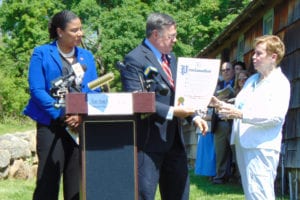
“We brag about the places that we come from,” he said. “We like telling people about these types of things.”
Flanagan said he hopes that residents, as well as those who travel to the area will take advantage of the educational experiences the signs call out along the way.
When Englebright stepped up to the podium, he asked State Assemblyman Mike Fitzpatrick (R-St. James) to join him and said he appreciated the partnership with his neighboring assemblyman as well as Flanagan when it came to the legislative resolution that recognizes the area’s historical significance.
“This is a special place,” Englebright said. “Patriots lived here. People put their lives on the line as the first espionage ring for service to our nation.”
Englebright echoed Rocchio’s sentiments of the importance of the signs that pay tribute to the area’s history.
“The memorialization of that through this signage that Gloria referred to, is a chance for us to celebrate that reality, that wonderful beginning of our nation, the role that we played in it,” the assemblyman said. “It’s also important to give a sense of place and sense of context for this and future generations.”
Brookhaven Town Supervisor Ed Romaine (R) and Councilwoman Valerie Cartright (D-Port Jefferson Station) presented a proclamation to Rocchio, which made May 18 North Shore Promotion Alliance Day in Brookhaven. Romaine also reflected on the historical importance of the day.

“Today we remember our history,” he said. “Today we remember ordinary people, living ordinary lives, who were called upon to do extraordinary things.”
John Tsunis, Chairman and CEO of Gold Coast Bank and owner of Holiday Inn Express Stony Brook, introduced Harry Janson, Sr., who was wounded in Vietnam and received the Purple Heart, a medal that originated from Washington’s Badge of Military Merit. Janson, who is on the board of the Long Island State Veterans Home at Stony Brook University, said he believed the members of the Culper Spy Ring — Tallmadge, Roe, Robert Townsend, Abraham Woodhull, Caleb Brewster and Anna Smith Strong — were worthy of the award as well.
“The difference is the example of their bravery,” Janson said. “They performed their bravery in covert, and they took their secrets to their graves.”
Before unveiling the Washington Spy Trail sign in front of the Brewster House, Janson had the same wish as others who worked on the installation of the signage.
“We hope that many of you drive the trail and learn about these brave men and women, and what they did for our country,” Janson said.
Additional Washington Spy Trail signs include ones located on the westbound side of Route 25A at West Broadway in Port Jefferson, by the Long Island Museum in Stony Brook, before the Smithtown Bull in Smithtown and at Lawrence Hill Road in Huntington Station.


